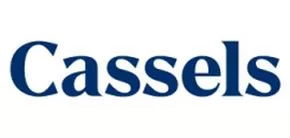The objective of a technical report is to provide a summary of material scientific and technical information concerning mineral exploration, development, and production activities on a mineral property that is considered to be material to an issuer. The technical report is the synthesis of the volumes of work that an issuer has completed to date on the mineral property and is intended to be a "one stop shop" for the investing public to find relevant and prescribed details about the subject mineral property.
Form 43-101F1 sets out the requirements for the preparation and content of a technical report. While Form 43-101F1 mandates the headings and general details required in the technical report, the Qualified Person preparing the technical report is responsible for determining the specific level of detail required under each item based on the Qualified Person's assessment of the relevance and significance of the information. One such item that is required to be included as part of a technical report is a "summary," as detailed in Item 1 of Form 43-101F1, which states that the issuer must "briefly summarize important information in the technical report, including property description and ownership, geology and mineralization, the status of exploration, development and operations, mineral resource and mineral reserve estimates, and the qualified person's conclusions and recommendations." There is not a level of detail specified in Form 43-101F1 that must be followed for the summary section of the technical report beyond these instructions. As a result, we have seen significant variation in the detail of the summary section across technical reports.
In addition to the objectives above, the technical report is also intended to support a mining issuer's public disclosure documents on a mineral property that is considered to be material to the issuer, such as its annual information form (AIF), news releases and corporate presentations. In particular, section 5.4 of the AIF form (Form 51-102F2), requires a summary of certain scientific and technical information, as well as the information on the relevant technical report, to be included in the AIF for each mineral project considered to be material to an issuer. To address this requirement, issuers will prepare a summary description following the headings specified in section 5.4 of Form 51-102F2, with such information being derived from the technical report. As an alternative to preparing a separate summary for the AIF, the instructions to section 5.4 of Form 51-102F2 allow an issuer to directly reproduce the summary from the technical report, with the added requirement of incorporating the entire technical report by reference in the AIF.
Given these requirements related to the AIF and to help add uniformity across an issuer's disclosure record, we recommend that mining issuers, or their external consultants, follow the AIF summary requirements under section 5.4 of Form 51-102F2 when preparing the summary for inclusion in the technical report in response to Item 1 of Form 43-101F1. With this approach, the issuer may then reproduce the summary from their technical report in the AIF, with minor conforming edits. This means the issuer can avoid the cumbersome process of either preparing a standalone summary addressing specific AIF requirements, as well as avoiding the need to incorporate the full technical report by reference into the AIF.
For those seeking to streamline the AIF drafting process, this provides the following benefits:
- The summary is drafted at the time of the preparation of the technical report, with the participation of the technical report authors. This approach ensures that the summary is prepared with, and reviewed by, the Qualified Person authors of the technical report, involving these authors from the beginning. Consequently, receiving the review, approval and obtaining any necessary consents from the Qualified Person authors is simplified.
- The summary is more investor friendly for AIF purposes. By purposefully drafting the technical report summary in an "AIF style," the issuer can ensure that the language used is more accessible, thereby complying with the "Plain Language" requirements under National Instrument 43-101, Form 43-101F1, and Form 51-102F2. While the National Instrument and the Forms require issuers to use plain language, the nature of a technical report often results in a more technical summary. This is further noted under s. 2.1(3) of the Companion Policy to National Instrument 43-101 where the regulators "recognize that the technical report does not always lend itself well to plain language". Thus, rather than incorporating the technical report by reference in the AIF, which is likely to include relatively more technical language, the AIF summary is often by design easier to understand for the lay reader. This also creates a summary that will likely be easier for the issuer to update on an annual basis under their AIF requirements.
Overall, we hope issuers take this recommendation into consideration when preparing their next technical report to help save resources when it comes time to prepare the summary for the AIF.
The content of this article is intended to provide a general guide to the subject matter. Specialist advice should be sought about your specific circumstances.




